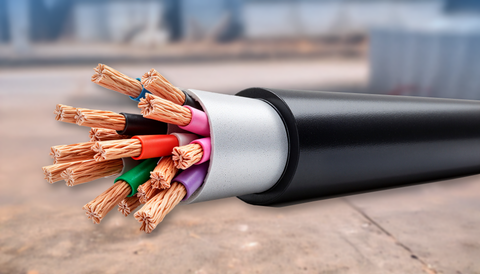Plastic Innovation Explained: Explore the Machinery, Technology & Essential Insights
Plastic innovation refers to the development, processing, and improvement of materials and machinery used to create plastic products. It includes advanced manufacturing systems such as injection molding machines, extrusion equipment, blow molding technology, and automated robotics that shape raw polymer materials into everyday items. This field exists because industries require efficient, scalable, and precise ways to produce components for packaging, electronics, healthcare, automotive, and construction.
Modern plastic manufacturing evolved from simple molding techniques to highly engineered processes that depend on controlled heating, cooling, shaping, and finishing. As demand for high-performance materials increases, innovation continues to focus on stronger polymers, lower environmental impact, and smarter machinery. Today, plastic innovation plays a central role in balancing industrial growth with sustainability expectations.
Importance
Plastic innovation matters because it influences product quality, manufacturing efficiency, and environmental impact across multiple sectors. Manufacturers depend on advanced machinery to maintain accuracy, reduce material waste, and optimize production cycles. Technology updates also support stronger materials used in medical devices, lightweight automotive parts, food packaging, and consumer goods.
This topic affects:
-
Manufacturers, who rely on high-precision equipment
-
Engineers and designers, who work with new polymer technologies
-
Regulators, responsible for environmental compliance
-
Consumers, who benefit from safer and higher-quality products
It helps solve several key challenges:
-
Reducing production waste through optimized machinery
-
Improving product performance with engineered polymers
-
Supporting sustainability through recycling-focused technologies
-
Increasing automation and efficiency using robotics
-
Enabling lightweight packaging and components
Businesses also focus on advanced strategies such as polymer innovation, manufacturing technology optimization, materials engineering solutions, and industrial automation systems—all high-value keywords within the plastic innovation ecosystem.
Recent Updates
The past year has introduced several meaningful advancements in plastic manufacturing technology.
2024–2025 Technology Trends
-
AI-Enabled Injection Molding (2024): Smart sensors and machine-learning systems now adjust temperature, pressure, and cooling in real time to improve accuracy and reduce defects.
-
Recycling-Integrated Machinery (2024): New systems allow manufacturers to process recycled materials directly within molding lines, improving circular production models.
-
Biopolymer Compatibility (2024–2025): Several equipment makers upgraded machinery to handle biodegradable and bio-based plastics that require different heating and flow properties.
-
Electric Injection Molding Machines (2025): Fully electric models have grown in demand because they offer higher precision, reduced noise, and lower energy use compared to hydraulic systems.
-
Advanced Quality Monitoring (2024): Vision inspection systems with edge computing are being adopted for instant quality checks, reducing reject rates.
-
3D Printing Growth (2024–2025): High-performance polymer 3D printers expanded their role in prototyping and short-run production.
Industry Shifts
-
More companies are adopting data-driven manufacturing and industrial IoT monitoring to improve uptime.
-
Sustainability-driven innovation is influencing raw material selection and machine design.
-
Demand for precision molding solutions and polymer engineering innovations continues to grow across sectors like automotive and healthcare.
Laws or Policies
Plastic innovation is shaped heavily by government regulations, environmental policies, and manufacturing standards. Although specific rules differ by country, several universal themes influence how companies design materials and operate machinery.
Environmental Regulations
-
Many regions apply restrictions on single-use plastics, encouraging manufacturers to adopt recyclable and biodegradable alternatives.
-
Emission and waste guidelines require the use of efficient machinery to reduce pollutants and production scrap.
-
Energy-efficiency standards promote the shift toward electric and hybrid molding systems.
Manufacturing and Safety Standards
-
ISO certifications such as ISO 9001 (quality management) and ISO 14001 (environmental management) guide production practices.
-
Machinery must align with safety regulations that govern heating systems, electrical components, pressure functions, and operator protection.
Recycling and Circular Economy Policies
-
Several countries introduced extended producer responsibility (EPR) programs requiring companies to support recycling infrastructure.
-
Regulations encourage the integration of recycled materials into new products, influencing machinery design and polymer selection.
These policies collectively push innovation toward cleaner materials, efficient machines, and smarter production methods.
Tools and Resources
A growing number of digital platforms and technical resources support professionals in understanding and applying plastic innovation technologies. These include:
Technical Calculators and Tools
-
Polymer flow analysis calculators – estimate melt flow, cooling rates, and pressure requirements
-
Material selection databases – compare polymer strength, temperature resistance, and processing needs
-
Injection molding cycle time calculators – optimize production scheduling
-
Energy consumption trackers – measure efficiency of molding machinery
Simulation and Modeling Software
-
Moldflow for injection molding simulation
-
SolidWorks Plastics for polymer flow analysis
-
ANSYS Polyflow for extrusion and blow molding modeling
-
Autodesk Fusion for component design and prototyping
Industry Knowledge Resources
-
International plastics associations
-
Machinery manufacturer technical libraries
-
Material engineering handbooks
-
Environmental compliance guidelines
-
Research publications on polymer technology
Training Platforms
-
Engineering e-learning portals focused on manufacturing processes
-
Technical webinars covering molding advancements
-
Digital workshops on automation and quality systems
These tools help engineers, designers, and operators improve decision-making and maintain high manufacturing standards.
FAQs
1. What machinery is most commonly used in plastic manufacturing?
The most widely used systems are injection molding machines, extrusion lines, blow molding equipment, thermoforming systems, and automated assembly robotics. Each machine type shapes plastic materials differently and serves specific product applications.
2. Why are electric injection molding machines becoming more popular?
Electric models provide precise control over speed, pressure, and movement, resulting in improved accuracy and lower energy use. They also require less maintenance compared to hydraulic machines, making them suitable for modern production environments.
3. How does technology support sustainability in plastic manufacturing?
New machinery is designed to use recycled materials more efficiently, reduce scrap through optimized controls, and support biopolymer processing. Automation and data analytics also help reduce waste and improve energy efficiency.
4. What are biopolymers, and why are they important in innovation?
Biopolymers are materials derived from renewable sources such as plants. They are increasingly used in packaging and consumer products because they support environmental goals and comply with evolving government policies.
5. How is automation influencing plastic innovation?
Automation improves consistency, reduces errors, and accelerates production. Robotics, AI-enabled systems, and real-time monitoring tools help manufacturers achieve higher precision and better quality control.
Conclusion
Plastic innovation continues to evolve as industries search for stronger materials, smarter machinery, and environmentally responsible solutions. Advances in molding systems, polymer engineering, automation, and recycling technologies are shaping how products are designed and manufactured. Regulations and sustainability goals reinforce the need for cleaner production methods and efficient equipment.
With ongoing developments in AI-enabled systems, biopolymer compatibility, data-driven monitoring, and precision engineering, plastic innovation remains a crucial field that supports modern manufacturing across sectors. As technology progresses, new tools, smarter equipment, and updated guidelines will continue to influence how plastics are created, processed, and utilized in everyday applications.






